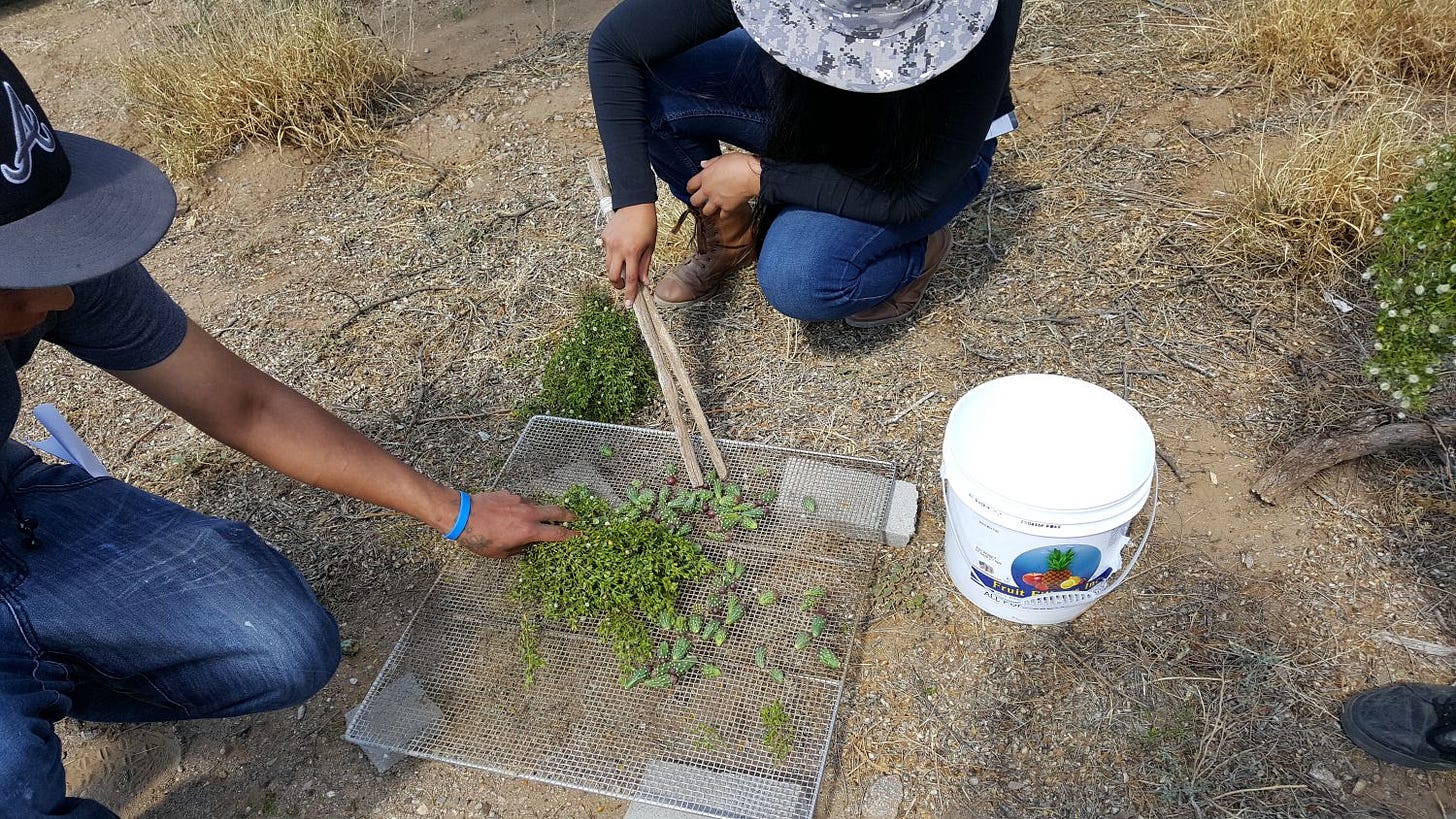Coexisting with cacti
O’odham tradition of harvesting cholla buds shows respect for native plants
Students at Tohono O’odham Community College press cholla buds against a screen to remove spines. Photo by Melanie Lenart
Living in a desert city is not the same as living in the desert. So, I was fortunate to have guidance from the Desert People—the translation for the Tohono O’odham—when I moved from central Tucson to some land about 30 miles from the city’s urban edge.
Before the move, for instance, I didn’t see cholla cactus around much except on hikes. I remember gathering around one at the Arizona Sonoran Desert Museum when some family members visited. We laughed when my pre-teen nephew, Austin, stood in front of the “jumping cholla” and dared it to shoot one of its prickly buds at him.
I saw cholla in a completely different light after moving out to an undeveloped but overgrazed parcel of desert in 2015. We moved there so my commute to Tohono O’odham Community College would be 45 minutes each way instead of the 75 minutes from our city location.
The O’odham eat cholla buds, after carefully picking, sifting, boiling and cooking them. Often pickled, cholla buds tend to complement a main dish or flavor a salad. Their virtues include being high in calcium and helping to stabilize blood sugar levels.
Some of my colleagues led sessions on the ancient and continuing tradition of harvesting buds, known as ciolim in the O’odham language. We collected buds from some varieties of cholla in spring while their spines were still reasonably small—more like the size of eyelashes than the needle-sized extensions they become in time.
Once it’s fully bristly and mature, the buds become capable of growing into a new plant, if they land on the ground in a decent spot.
Presumably that’s why cholla is so good at clinging to us mammals. Jumping cholla is nicknamed for its ability to latch onto passer-by from seemingly nowhere. Brush against it or step on one and you may be carrying it to its new home.
So-called jumping cholla or teddy bear cholla. Photo by Melanie Lenart
This less edible variety is also called teddy bear cholla, because it’s so covered with spines it looks fuzzy. Those spines feel anything but cuddly when they embed in a foot or an arm, though. They’re difficult to dislodge, given they are basically a 360-degree ball of prickles. People learn to use a stick.
When one of my terriers first experienced a cholla ball on her foot, she tried to pull it off with her mouth. Not a good idea. I grabbed her before it became too embedded and, with some effort, pulled it off the side of her face. A few spines had made their way into her mouth, but I was able to coax her into letting me extract those as well.
Living among these moving cactus parts has diminished my love of walking barefoot outside. It has also increased my admiration for the Tohono O’odham, who have long co-existed with these roundabout plants. Cholla’s continued presence in the desert environment speaks to their tolerance for inconvenient species.
This was brought home to me within a year of moving out here. One afternoon, I was walking around and noticed our neighbor, an older fellow with European ancestry, slicing up a cholla plant. He pointed to one on the land where we live and offered to chop down.
No thank you, I told him, feeling relieved I had been there to stop him. Like the O’odham, I avoid removing native plants unless absolutely necessary. We only lost one tree seedling to our tiny home construction, and no mature trees or cacti.
He swiped his machete around, eventually taking down four nearby plants on the property he was caretaking. I came upon the pile of dead parts soon afterward while walking the dogs. There, the remains of a lot more than four plants had been laid to rest.
This clearing by him and several other neighbors, plus the rarity of cholla in Tucson proper, made me wonder if any cholla would exist outside botanical gardens if Europeans had managed to fully take over the homeland of the desert people.
Only later did it occur to me how clever and perhaps calculated is the O’odham use of this scrappy native plant. After all, harvesting the buds means fewer of them will mature to become spine-covered balls that litter the landscape and start new plants.
It’s refreshing to be around a culture where respect for nature extends to even the prickliest among us. Yet it’s somehow reassuring, too, to see they have their own ways for keeping the cholla population in check while supplementing their diets.
Those in Tucson who would like to try this O’odham delicacy can often find them at Native Seeds Search and at the O’odham-run San Xavier Coop Farm. Purchases support the people who continue to harvest ciolim. Below is a bucket of ciolim showing how cholla buds look after harvesting.






